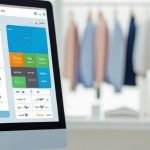How Tracking Customer Purchases
Many retailers focus on looking forward and seeking new, fresh ways to make more sales. But it’s easy to get lost in the possibilities because there are countless things you could try. It’s hard to tell which path would lead to the most sales, and you may end up randomly guessing at the best tactic for your business.
But using data generated from past sales through your POS software, you can create a strategy to increase revenues. You don’t have to do so much guesswork when you have the right data — and you know how to use. To get insight on what works and what doesn’t when it comes to making sales, look to the past and evaluate your customers’ order histories.
Understanding Your Order History
A customer’s order history is a list of all the orders they’ve placed with your business in the past. It includes the specific items they purchased and how much each costs, along with information about the customer and when they bought the products.
You can find order history in your point-of-sale system. Your POS software will allow you to browse using various data points, from the customer themselves to individual products and sales broken down for specific dates. As you and your staff make sales, create thorough customer profiles so that you can learn more about them and their shopping habits. POS softwares in Pakistan provide up-to-date information regarding your stores’ order history and you can easily use the data provided to generate more sales.
Use Insights Provided by a Customer’s Previous Orders
Order histories are like a glimpse at what works and what doesn’t in terms of the products customers want to buy from you. The easiest way to put the data to use? Look for trends:
Dates:
See if you can spot any date-related trends in your order history, and use that information to plan ahead to better manage your shop and inventory.
Products:
Analyzing product sales trends gives you the information you need to offer the right products to the right people. It can also inform how you organize your store (or your website), so that products frequently purchased together are displayed together.
You can look at the order history for your store and use that data for marketing purposes, too. Here are some ideas you can try once you use your POS to understand sales trends:
Make specific recommendations: Customers who make one purchase from you are likely to make another in the future — especially if you make it easy for them and give them a nudge. Create opportunities to upsell.
You can offer tailored coupons and offers, too. Customers who show an interest in a specific product may buy a related item when offered a coupon for the second product.
Create personalized marketing messages: Because you know who bought what and when after looking at order histories, you can tailor your marketing messages in really specific ways.
This is more effective than sending generic (and general) emails to your entire list. Create segments based on customer activity and purchases. Then send campaigns that are highly relevant to their interests — which you know, because you can see what they buy.
Target your promotions and advertisements: Use customer demographic data to target audiences on paid social advertisements and other promotions you want to run.
Improve the Individual Customer’s Experience
Order history also lets you improve the experience you offer to consumers, one customer at a time. Again, it’s all about trends: you can look to see when a repeat customer makes purchases, what they buy, and how often they shop with you.
From there, you can proactively curate their experience to leave them feeling more satisfied and highly valued. And personalizing their shopping experience based on their past purchases and potential needs can lead to brand loyalty and a higher customer lifetime value.
You can try something like:
- Sending a personalized email asking if they’re low on a certain item — and including a small coupon for what they purchase most frequently.
- Providing an offer for a free sample or small gift with their next purchase of an item that’s similar or related to what they frequently buy to encourage a bigger sale in the future.
- Offering special or exclusive deals that only “top customers” receive. (They’ll feel valued and might add something new or extra onto their usual purchase.)
Order histories serve as a sort of blueprint when you need to make decisions about how you’ll boost sales. Instead of guessing, you can make informed choices based on actual data and trends. That includes keeping accurate inventory, even during your busiest periods. Maintaining stocked shelves means you don’t miss out on sales opportunities — and you keep customers happy. Roll is an effective app that will help your business manage inventory without costing too much. By means of an automated inventory management system, you can efficiently keep track of stock levels at all times.
It also means knowing what sells well and creating plans and promotions to feature that in store and online to encourage even more sales. On the flipside, you can discontinue the products that take up shelf space but aren’t popular with customers.
Your order history helps you market better by providing you with the necessary information to create highly targeted campaigns and ads.








